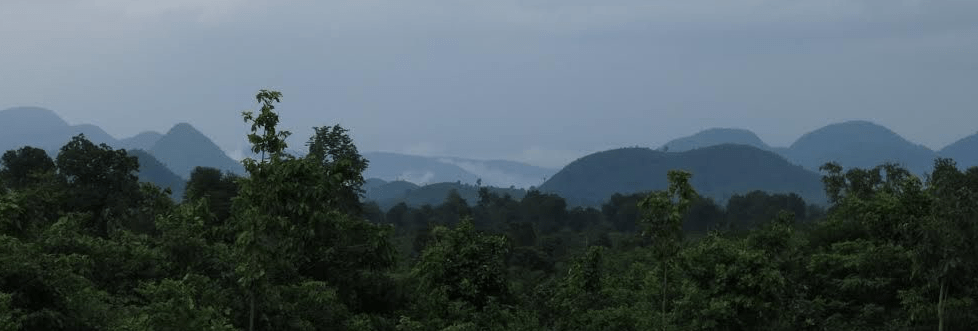For centuries, the Niyamgiri Mountains have been the home of the Dongria Kondh tribe. They are a small community of about 8000 Adivasis, residing in the Eastern Ghats of the Indian state of Odisha. Their symbiotic relationship with nature involves sustainable agriculture and traditional systems of kinship. However, state-industry nexus threatened this peaceful fabric of existence. The Niyamgiri Movement is a grassroots people’s movement against exploitative corporations. It is a tale of resistance against neo-colonialism, nation-building, cultural discrimination and environmental racism.
The Niyamgiri hills, situated in the state of Odisha, are rich in bauxite. In 2003, the Government of Odisha signed a Memorandum of Understanding (MoU) with Vedanta Aluminum Limited (VAL). For the state’s industrial growth, an alumina refinery and a bauxite mining plant held enormous profits. On the other hand, the project endangered the livelihood and habitat of the Dongria Kondh tribe. Thus, the guise of development displaced tribals and destroyed environment.
The Resource Curse
The tribals worship Orissa’s bauxite-capped mountains as their lives are dependent on the forest produce. Environmentally diverse and mineral-rich areas have always been a target for industrial capitalists. According to neo-colonialists, these bauxite-capped mountains are unutilised resources.
Does development mean replacing nature’s bounty with concrete jungles? How is destroying ancient mountains with mining pollutants called progress? Is the displacement of thousands of people just unfortunate collateral? Why is it that the displaced are never compensated with land?
So, the proponents of ‘development’ ignore the Adivasis’ political and economic rights over their lands. Moreover, tribal communities living for years in these areas are financially manipulated. This leads to cultural genocide and exploitation. Widespread corruption and privatization fires these conflicts. In this way, the ‘resource curse’ unfolds in places like Niyamgiri.
Development Agenda
The present industrialisation process is shockingly similar to colonial attitudes of progress. However, the blind pursuit to increase India’s growth rate, sidelines the negative impact on the lives of Adivasis. Special Economic Zones or SEZs created to improve the “climate” for foreign investment. However, laws and rights that protect the environment and the people dependent on them are disregarded.
Environmental and tribal issues demand questioning the system that propagates a certain kind of “development”. Does development mean replacing nature’s bounty with concrete jungles? How is destroying ancient mountains with mining pollutants called progress? Is the displacement of thousands of people just unfortunate collateral? Why is it that the displaced are never compensated with land? The Niyamgiri Movement unmasked the greed of bureaucrats, politicians and industrialists by challenging the agenda of development in modern India.
Also read: Supreme Court Evicts Adivasis Forcibly And Rejects Claims Over Forest Lands
Cultural Appropriation
Tribal lands like Niyamgiri, are portrayed by the mainstream as places of “stark poverty”. They are time and again misrepresented as jungles that have to be developed by the encroachment of industries. Their resources, lands, even their culture and religion are being controlled by exploiters. Recently, the fashion house Amoh by Jade launched a collection called “The Descendants of Niyam Raja”. This insensitive cultural appropriation reveals the larger picture of marginalization. Just like Vedanta, these callous capitalist ventures refuse to acknowledge the struggles of Adivasis.
The media flouts its duty to uphold freedom and human rights. Instead of reporting the displacement of the minorities, it lauds the interests of capitalists. Anti-tribal stance is the norm in mass media and newspapers. Non-violent demonstrations and dharnas demanding tribal rights are termed Naxal-sponsored and often demonized. Thus, people making profits at the cost of people’s lives must be held accountable.
Corporate Green-washing
The Niyamgiri hills have a reserve of 73 lakh tonnes of bauxite. In order to manufacture consent, Vedanta’s mining project claimed to have “zero harm”. In reality, bauxite refining produces ‘red mud’, a toxic solid waste that is indisposable. Additionally, mining renders the water reserves dry, as sponge-like properties of bauxite help in water-retention.
The corporation’s misleading assertion that aluminium is “green” hides its drastic effects on the environment. The fuel requirement and waste generation of these projects would wreck havoc in the environment and the lives of Adivasis. Therefore, it is necessary to reduce extraction and consumption of non-renewable resources.
Ecological Gate-keepers
The Movement was a revolt against cutting down of trees and destruction of forests. Their protest was to protect wildlife and their natural habitat. They fought against a corporate giant that wanted to have their mountains mined for minerals, leaving this ecological haven dry and infertile. Adivasis have always been the custodians of nature and its resources. For them, the mountains are the source of life, nourishment and fertility. The Dongria Kondh’s religious and cultural tenets follow sustainable living and self-sufficiency. Their religion is based on respect for nature and their supreme deity, the ‘Niyam Raja’.
Also read: Cultural Appropriation of the Dondria Kondh by Amoh By Jade
The struggle between the Dongria Kondh and Vedanta has been compared to James Cameron’s Oscar-winning “Avatar” movie by environmentalists and media. The symbolism of humans fighting with indigenous people for mineral rights is an apt metaphor for the Niyamgiri Movement. Their sheer determination and courage has inspired the world.
References
Featured Image Source: The Wire
About the author(s)
Sudeshna is an English Literature Postgraduate from Lady Shri Ram College, currently enrolled at the EditPub course in Jadavpur University. Working as a freelance writer, editor and digital marketer; she is a creative bohemian with a penchant for adventure and art.





